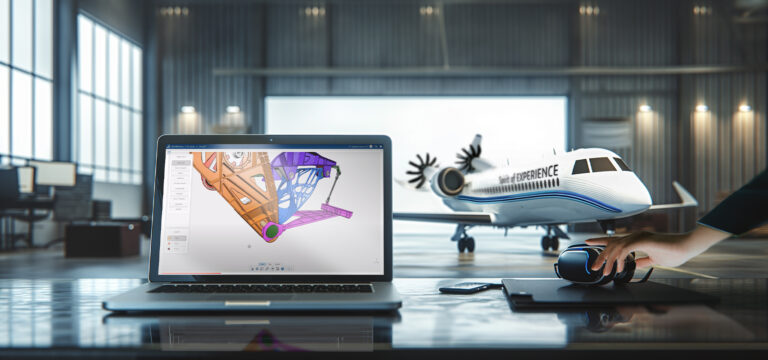How Total Quality Management Drives Aerospace & Defense Productivity and Performance
Total Quality Management’s Second Act: From Compliance Burden to Productivity Engine
For decades, Total Quality Management in Aerospace and Defense (A&D) felt more like roadblocks than guardrails. Compliance checklists. Audit trails that stretch for miles.
But something shifted in 2025. While most A&D manufacturers were still treating TQM as an obligatory relationship – nod and suffer through it – a select few discovered its hidden edge: TQM doesn’t just preserve quality, it amplifies productivity.
We’re not talking about slapping flashy digital Band-Aids on outdated processes. This is TQM reimagined as a performance engine that fuels first-time-right outcomes, accelerates certification processes, and enables scale without sacrificing precision, all backed by tangible KPIs.
Continuous Improvement by Design
Here’s where things get interesting, and where TQM sheds its reputation as bureaucratic overhead. When applied in the right place, Total Quality Management is a high-leverage driver of throughput, design precision, and regulatory approval.
New pressures, such as compressed timelines, talent shortages, and mounting policy complexity, are pushing A&D manufacturers to rethink where continuous improvement begins. What lean practitioners call Kaizen no longer waits for the factory floor. It starts at the design stage. Integrated platforms like Dassault’s 3DEXPERIENCE make that shift not just possible, but essential by incorporating continuous improvement directly into model-based engineering workflows.
With CATIA’s integrated quality approach, Design Failure Mode and Effects Analysis (DFMEA) isn’t a disconnected spreadsheet anymore: it’s live design intelligence that captures and addresses failure modes in real time. Engineers[SE1] don’t just imagine better parts; they use DELMIA’s Process Failure Mode and Effect Analysis to ensure manufacturability for first time quality on the Shopfloor, they test trade-offs, and eliminate risk before a prototype ever hits the floor.
What emerges? Design-integrated quality that reduces failure rates without costly iteration cycles. Safety-by-design becomes automatic rather than aspirational. This is the new face of Total Quality Management: not reactive defect control, but proactive design assurance that thinks three moves ahead and prevents the delays and costly oversights that legacy programs used to normalize.
The Self-Improving Factory Floor
But the magic doesn’t stop at design. Modern TQM systems extend into production, where quality evolves from a checkpoint into a continuous feedback loop.
Platforms like DELMIA turn manufacturing execution into live learning environments. Shop floor anomalies are detected in real time and traced to their root causes across machines, processes, and materials. Automated Corrective and Preventive Action (CAPA) workflows respond instantly, channeling insights directly back into upstream design and process control.
Each issue becomes a learning opportunity. Each fix enhances the system. Over time, production data flows seamlessly into engineering models, helping teams prevent recurrence and mature their processes. The more the system operates, the more capable it becomes.
Where the old model waited for problems to pile up, then threw resources at fixing them, the new model catches problems early, adapts fast, builds immunity, and uses quality challenges to sharpen competitive edge.
Total Quality Management as Your Secret Productivity Multiplier
What makes TQM powerful in 2025 isn’t that it standardizes tasks, it’s that it unlocks flow across functions that used to trip over each other:
- Engineering: Less rework, fewer handoff failures, faster validation cycles. Programs get to certification faster with fewer surprises. Teams spend less time fixing and more time creating.
- In Manufacturing: Lower process variability, faster inspections, fewer unplanned stoppages. Quality stops being a firefight and starts becoming a flow state where the factory floor becomes predictable instead of chaotic.
- In Support & Services: Tools like NETVIBES pull operational data into predictive models. Downtime drops. Maintenance becomes preventive, not reactive. Assets last longer and perform better.
Rather than slowing operations with compliance demands, TQM now accelerates them by embedding intelligence into every stage of the value chain.
Quality Metrics That Move the Needle
What separates legacy TQM from its modern counterpart? Measurable business impact. Today’s platforms link quality efforts directly to performance metrics that make CFOs pay attention:
Overall Equipment Effectiveness (OEE) improves through process stability and fewer unplanned stoppages. New Product Introduction lead times shrink thanks to early validation and fewer redesign cycles. Cost of Poor Quality (COPQ) drops through first-time-right results and reduced warranty claims. Manufacturing yield increases by eliminating scrap, rework, and variability.
This is quality you can quantify and defend in boardroom discussions about productivity and ROI. When quality becomes a profit center instead of a cost concern, everything changes.
Total Quality Management as a Culture and a Capability
In A&D, which is a talent-constrained, risk-intensive environment, scaling excellence is more urgent – and more difficult – than ever. Integrated platforms make quality everyone’s business, not just the quality department’s. That’s the cultural overhaul that truly turns TQM into a transformative asset.
Modern aerospace & defense TQM systems, powered by digital platforms like 3DEXPERIENCE, aren’t about more procedures or longer checklists. They’re about empowering every team member to make smarter decisions faster, with confidence. They build shared accountability, continuous learning, and operational clarity into the organizational DNA.
The New Quality Equation
In 2025, A&D quality management isn’t just a gatekeeper: it’s a growth enabler. And Total Quality Management isn’t a cost of doing business. It’s a strategic advantage waiting to be unlocked by manufacturers brave enough to see compliance as capability.
The companies winning this transformation aren’t the ones with the most quality inspectors or the thickest procedure manuals. They’re the ones who figured out that when you build intelligence into quality systems, those systems start making you smarter, faster, and more profitable than your competitors.
Ready to turn compliance into capability and make quality your competitive edge? Explore how smart TQM is driving measurable A&D performance.
